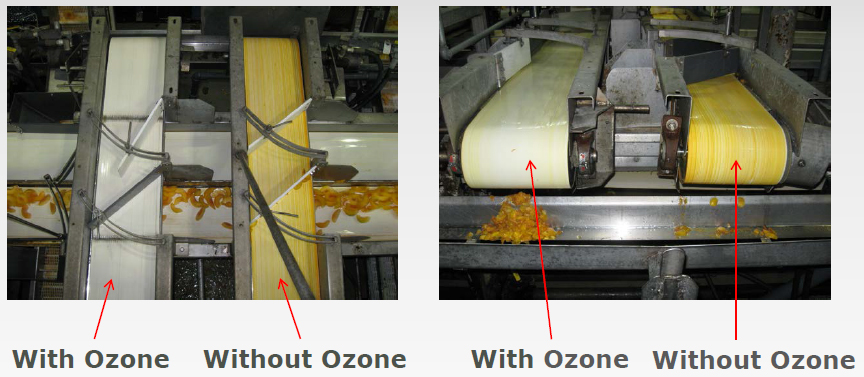Ozone has a short half-life (seconds to minutes depending on temperature and pH if aqueous; minutes to hours in air), and reverts to oxygen. Ozone can be utilized as a gas (in a confined and controlled-access space) or it can be dissolved in water for targeted application. When ozone comes into contact with a bacterium, the most active but most weakly bonded oxygen atom separates and oxidizes the cell membrane, ultimately causing cell bursting and destruction; the weak bond splits, leaving oxygen as a by-product.
Why Consider Ozone?
Ozone Is Safe and Sustainable
Ozone Is a Powerful Antimicrobial
Ozone effectively kills all known food and human pathogens, including E. coli, Listeria, Salmonella, Staphylococcus, Campylobacter, Pseudomonas, Aspergillus, Brettanomyces, Trichophyton, Bacillus, Adenovirus, and Norovirus. Microorganisms cannot build-up a tolerance to ozone; ozone readily breaks down biofilm (while further eliminating its build-up with regular use) and is safe for all surfaces found in processing establishments.
Ozone Is Non-Thermal Sanitation
Manufactured near the point-of-use, gaseous ozone is dissolved in cold water to create “ozone-enriched cold water” which is commonly referred to as aqueous ozone. Aqueous ozone can be utilized at several points of the process. Aqueous ozone can be applied as a low-pressure spray, either with fixed spray bars, a hand sprayer or a low-pressure drench/cascade or shower; it can be added to flume water and sent to drain or recirculated; it can be used for recycling moderately clean water for some processes.
Beth Hamil O3 Consulting
Ozone Benefits
Ozone is an efficacious antimicrobial oxidizing agent, disinfectant, and sanitizer
The disinfecting capability of 1 PPM Aqueous Ozone is equivalent to many times (10 to 4,000 times) the concentration of free available chlorine (Morris, 1975 –Disinfection: Water & Wastewater), depending on pH, temperature, and on the specific microorganism(s) to be destroyed
Some microorganisms (oocysts such as Cryptosporidium parvum) are tolerant to chlorine but are destroyed by ozone
Bacteria (and viruses) cannot develop a tolerance to ozone because disinfection occurs by the high oxidation power of ozone attacking cell walls/membranes (bacteria) or the DNA chains (viruses)
Aqueous ozone is documented to effectively break down and remove biofilms of varying types
Ozone (sometimes alone, sometimes combined with UV radiation or hydrogen peroxide) is documented to destroy pharmaceutical pollutants such as endocrine disruptors
Specialty Services Offered
Ozone Science Education/Presentations
Ozone System Sizing
System Applications
Ozone Study Protocol Development
Project Management and Teamwork
Sanitation Consultation
Technical Writing
Trouble-Shooting Ozone Integration
Ozone Consultation












